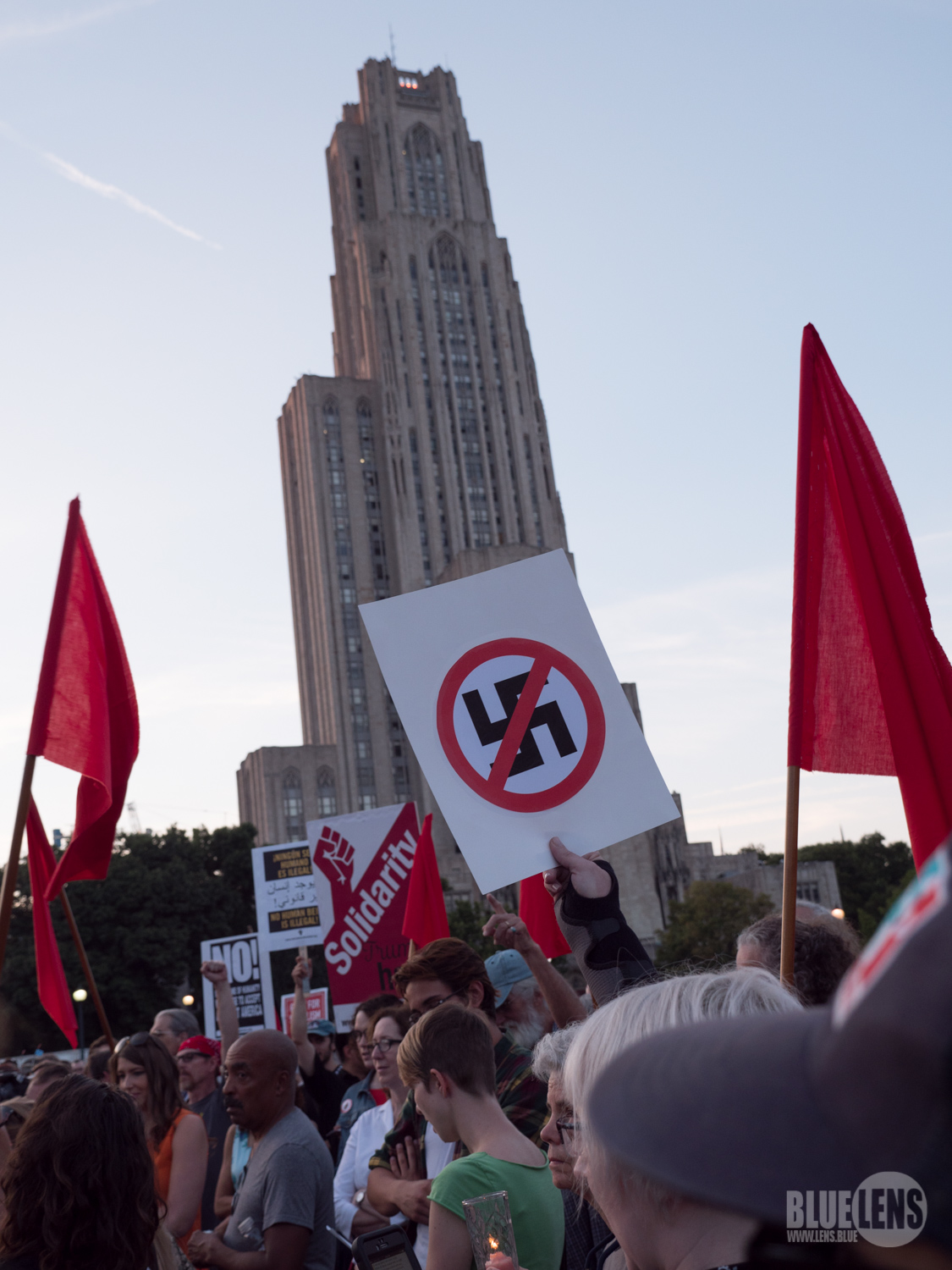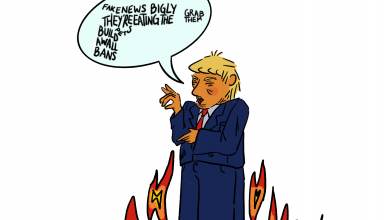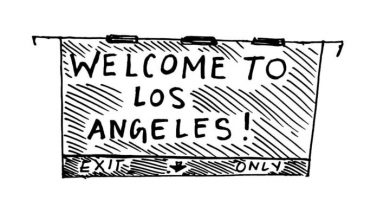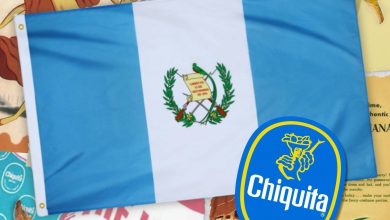When Your Existence is an Offense: The Events in Charlottesville

Image by Mark Dixon from Pittsburgh, PA (Charlottesville-50245) via Wikimedia Commons / CC BY 2.0
If you’re not outraged, you’re not paying attention.
On the evening of August 11, torch-bearing men and women marched onto the grounds of the University of Virginia to protest the removal of a statue of the Confederate general Robert E. Lee. On a night where these white supremacists chanted phrases such as “white lives matter,” “Jews will not replace us,” and the Nazi slogan, “blood and soil,” a few scuffles occurred and one individual was arrested. Sights from the evening invoked for some the images of Ku Klux Klan rallies of decades past.
This gathering was a precursor to the Unite the Right rally set to take place the following day. Unite the Right, an event organized by local blogger Jason Kessler, was created not only to protest the movement of the Confederate general’s statue, but also, as Kessler described, “the tearing down of white people’s history and [their] demographic replacement.” Groups present at the August 12 event included members of the Ku Klux Klan, neo-Nazis, and self-identifying white nationalists and supremacists. Confederate flags were waved, Nazi flags were held high, and some men, shirtless, proudly displayed their swastika tattoos. The chants used the night before, filled with words of intolerance and hate, were utilized again.
Counter protests immediately took place in response. Groups of counter-protesters, consisting of Black Lives Matter activists, rabbinical students and rabbis, LGBTQ+ activists, students at the University of Virginia, members of the clergy, and countless others, decried and demonstrated against the gathering of white supremacists. Their responses ranged from “No Trump! No KKK! No fascist USA!” to “Black Lives Matter!” The encounters between the white supremacists and counter-protesters eventually turned violent, with punches thrown, bottles slung, and pepper spray filling the air. The conflict intensified before coming to a head in a horrific climax.
The protests and rally culminated in tragedy when a gray car, driven by a 20-year-old white supremacist named James Alex Fields Jr., rammed into a crowd of anti-racist protesters, injuring 19 people and killing one woman. The woman, Heather Heyer, 32, would be described by family and friends as someone who was a passionate advocate for marginalized individuals, an individual dedicated to activism. Her murderer, Fields, was later arrested, denied bail, and charged with second-degree murder, three counts of malicious wounding, and one count of hit-and-run.
The events that took place in Charlottesville continued to be the top trending topic 48 hours afterward with countless individuals and numerous public figures expressing outrage and shock. For many, primarily white individuals, Charlottesville was an awakening to how deeply ingrained white supremacy is within United States society, and how emboldened white supremacists have been allowed to become under Trump’s presidency. Charlottesville is a lesson in white complacency and its consequences, where one woman needlessly died over a statue of a Union traitor.
However, for so many others, the events of Charlottesville resulted in a pained, heartbroken sigh of everything we always knew. People of color, Jews, LGBTQIA+ folx, immigrants (documented and undocumented), and countless other marginalized individuals have always been acutely aware of belief systems and mindsets that deem our very existence to be an offense. Racism is not new. Antisemitism is not new. Neither is homophobia, or creeds that call for the exclusion or expulsion of certain groups in the name of “racial purity.”
It is telling that Donald Trump did not immediately call out the white supremacists, neo-Nazis, KKK members, and other hate groups who had attended the rally in the hours following Heather Heyer’s death. According to him, the conflict came not from the neo-Nazis, Klansmen, or those longing for the days when mass genocide took place against specific groups, but “on many sides.” Remnants of a Confederacy that sought to perpetuate the legal enslavement of Black people and the continued exploitation of Black bodies became equated with a movement demanding justice for the killings of unarmed Black individuals. Nazism became a valid viewpoint worthy of debate, never mind the six million Jews who were killed during the Holocaust, and their descendants who must live on with this painful history. It took Trump three days to finally say that “Racism is evil,” and denounce the “KKK, neo-Nazis, white supremacists, and other hate groups.”
White supremacy has always existed, and Charlottesville is only one incident amongst countless others in history where it has manifested in the extreme. White supremacists and white nationalists do utilize the power of white supremacy and carry out actions in its name, but white supremacy itself is not something that solely exists in people. It exists and works through institutions of government and social norms. It exists in the self-deprecating mindset of internalized anti-Blackness and anti-Browness within people of color who are frequently taught that they are less. It exists through the epitomizing of white Christianity as the only true religion, with other belief systems being painted as wrong and evil. It exists by placing white, cisgender, heterosexual males at the very top of the social hierarchy, forcing those below them to be viewed as inferior.
White supremacy and white nationalism have always existed. But this does not mean that they cannot be undone.
Several vigils for Heather Heyer have taken place throughout the country to honor her memory and all that she stood for. Heather Heyer’s now unused Twitter account consists of posts containing her condemnations of police violence against Black people and countless comments from individuals hailing her as a hero. Her final Facebook post, also filled with notes from kind strangers wishing her peace, is as follows:
“If you’re not outraged, you’re not paying attention.”




